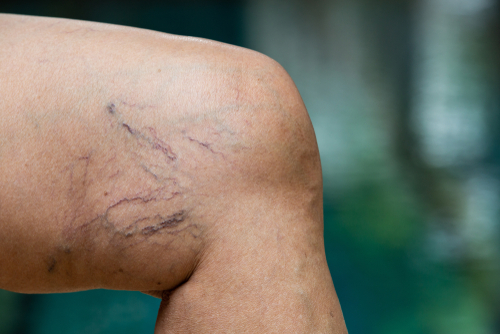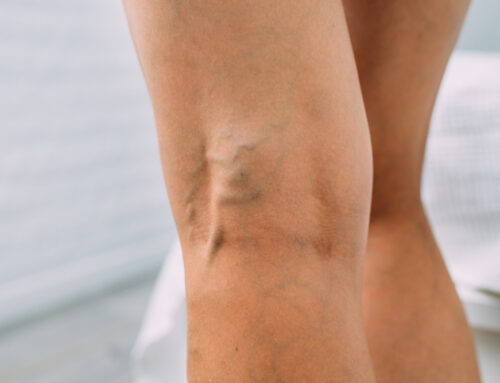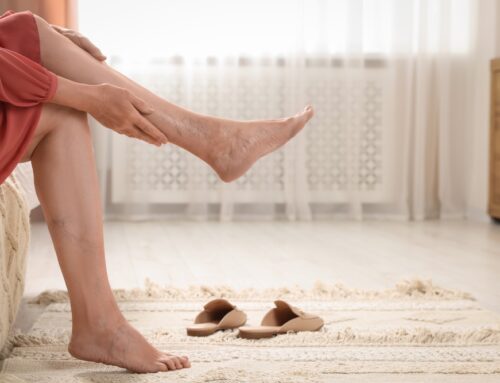How Do I Know If I Have Varicose Veins?
Varicose veins are swollen and damaged veins that cannot pump blood back to the heart efficiently. In healthy veins, valves work against gravity to return the deoxygenated blood to the lungs and heart for reoxygenation.
With damage sustained over time and age, the pumps begin to malfunction and blood flow becomes impaired. As a result, blood pools in the veins which causes a rise in blood pressure, and the veins begin to swell (superficial thrombophlebitis).
What Are Varicose Veins?

Varicose veins are characterized by gnarled, twisted, swollen, and discolored veins near the surface of the skin, and are most common in the legs. Pain and swelling of the legs around these veins are some of the most common accompanying symptoms.
Varicose leg veins not only cause physical pain and tiredness in the legs but also cosmetic concerns.
In terms of dangerous medical conditions related to varicose veins, they can be a sign of deep vein thrombosis (DVT) and pulmonary embolism.
DVT occurs when a blood clot forms in the deep veins in the leg, thus impeding blood flow in nearby veins. A pulmonary embolism occurs when a blood clot forms, then breaks off and travels to the veins in the lungs. Because this condition impairs the lung’s functions, it is life-threatening and should be treated immediately.
You Might Have Spider Veins If You Notice Tiny Discolored Veins
Spider veins are a lot like varicose veins, but are much smaller. Instead of larger veins becoming swollen and discolored, tiny capillaries become dark and discolored near the surface of the skin.
When these tiny blood vessels become diseased, they also twist and turn and start to look like little spider webs. Typically, spider veins are noticeable around the thin skin on the face, but can also be seen on the legs.

If you have a history of smoking or obesity, your risk of developing spider veins increases. Thankfully, spider veins are not dangerous, but patients do find them hard to deal with in terms of their appearance. Sometimes spider veins can be a sign of DVT, but there will be other symptoms in addition to the spider veins.
Treating Varicose Veins vs. Treating Spider Veins
Surprisingly, the treatments for both spider veins and varicose veins are quite similar. After finding and diagnosing the source of the vein problems, your surgeon will recommend the most effective treatment. For varicose veins, treatments can include radiofrequency ablation, sclerotherapy, venous ligation, and venous stripping. For spider veins, a surgeon can perform sclerotherapy or light therapy treatments to make the spider veins fade.
If you have varicose or spider veins and want treatment in Flint, Michigan, contact our vascular surgeons at VeinSolutions Flint for a consultation. We want to help you look and feel your best, so you can get back to living an active and pain-free lifestyle.
Request A Consultation
Give Us A Call:
(810) 232-3363
Give Us A Call:
(810) 232-3363



